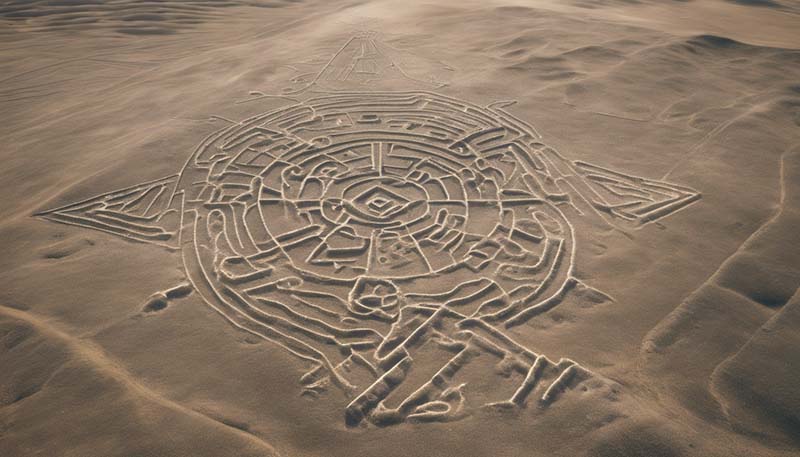The Nazca Lines: The Mysterious Geoglyphs of Peru
Discovered in the 1920s, the Nazca Lines are an extensive group of ancient geoglyphs located in the Nazca Desert of southern Peru. They were designated as a UNESCO World Heritage Site in 1994 due to their cultural and historical significance. The lines consist of a series of shallow lines, some of which form intricate designs, including animals, plants, and geometric shapes. The purpose of these enigmatic figures has been the subject of much debate and research.
History and Discovery
The Nazca Lines were first brought to the world's attention by pilots flying over the area in the 1920s. However, their origins date back to the Nazca civilization, which thrived in the region from about 100 BCE to 800 CE. The civilization is known for its advanced ceramics, textiles, and, most notably, its geoglyphs.
Advertisement
Technique and Creation
The Nazca Lines were created by removing the reddish-brown iron oxide-coated pebbles that form the desert's surface to reveal the light-colored earth underneath. This technique allowed the lines to stand out against the desert backdrop. The lines can range from simple to complex, with some stretching for miles and others as intricate as a spider's web.
Types of Geoglyphs
The Nazca Lines include three main types of geoglyphs:
- Lines: These are the straight lines that crisscross the desert, some running parallel to each other and others intersecting at various angles.
- Geometries: There are a variety of geometric shapes, including triangles, spirals, and trapezoids.
- Biomorphic Figures: These are the most famous of the Nazca Lines and include depictions of animals such as monkeys, birds, fish, and a whale. There are also depictions of plants and human figures.
Mystery and Theories
The Nazca Lines have intrigued archaeologists and historians due to their sheer scale and the precision with which they were made. Several theories have been proposed to explain their purpose:
- Astronomical Markings: Some researchers believe that the lines may have been used to map celestial bodies and track the movement of the stars and planets.
- Water Source Indicators: Given the arid nature of the region, another theory suggests that the lines could have been used to locate water sources.
- Ceremonial Pathways: The lines might have been used in religious or ceremonial processions, with the figures representing deities or mythological creatures.
- Messages to Deities: Some scholars speculate that the Nazca people created these lines to communicate with gods or to petition for divine favor, especially in times of drought or other natural disasters.
Preservation and Modern Interest
The Nazca Lines are fragile and their preservation is a significant concern. Erosion, human activity, and even the growth of vegetation threaten the stability of these ancient artworks. UNESCO and various organizations are working to protect and conserve these unique cultural treasures.
In recent years, the Nazca Lines have also become a popular tourist attraction. Visitors can view the lines from the ground, but the most impactful perspective is from the air, which is why aerial tours are a common way to experience the Nazca Lines.
Conclusion
The Nazca Lines continue to captivate the imagination of people around the world. Despite considerable research, many questions about their purpose and the techniques used to create them remain unanswered. As archaeologists and historians continue to study these ancient geoglyphs, we can only hope to unlock more of their secrets and gain a deeper understanding of the Nazca civilization that created them.

A stunning aerial view of the Nazca Lines, showcasing the intricacy and scale of these ancient geoglyphs.
Comments